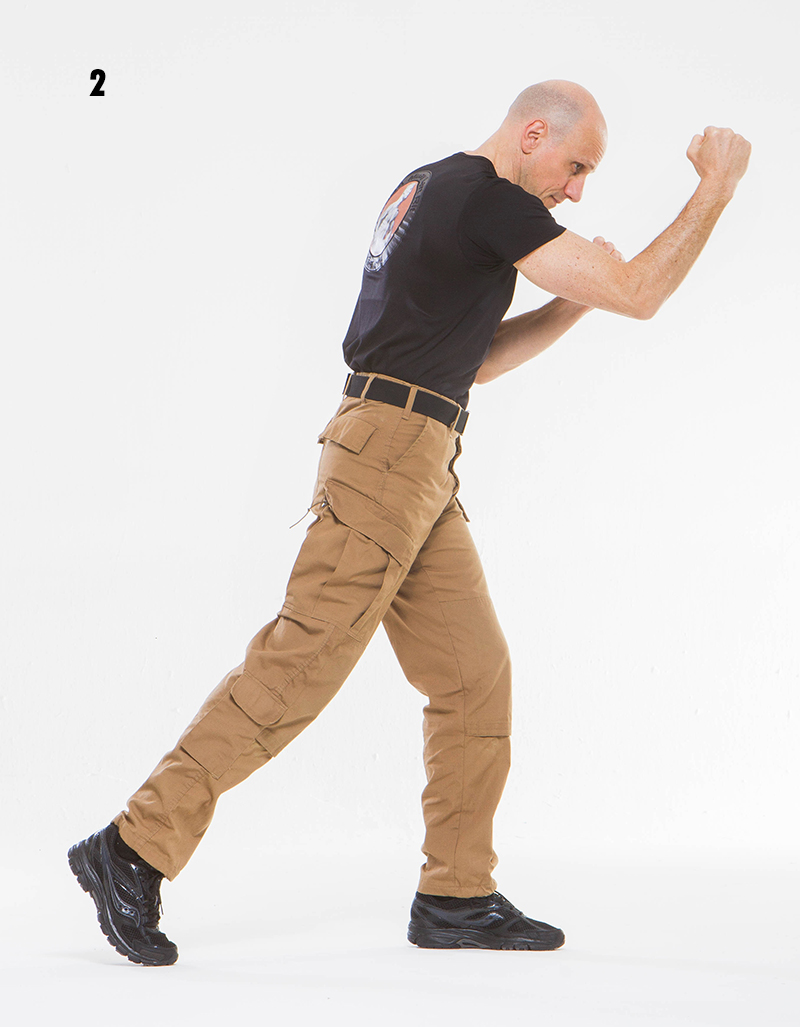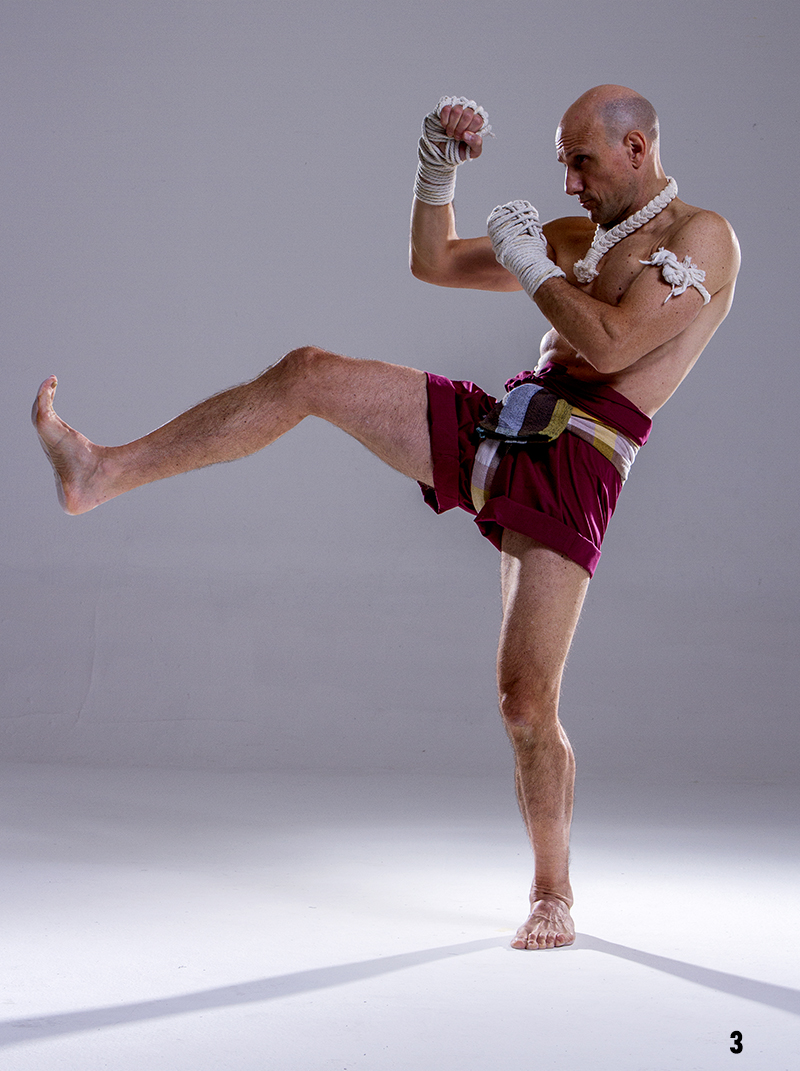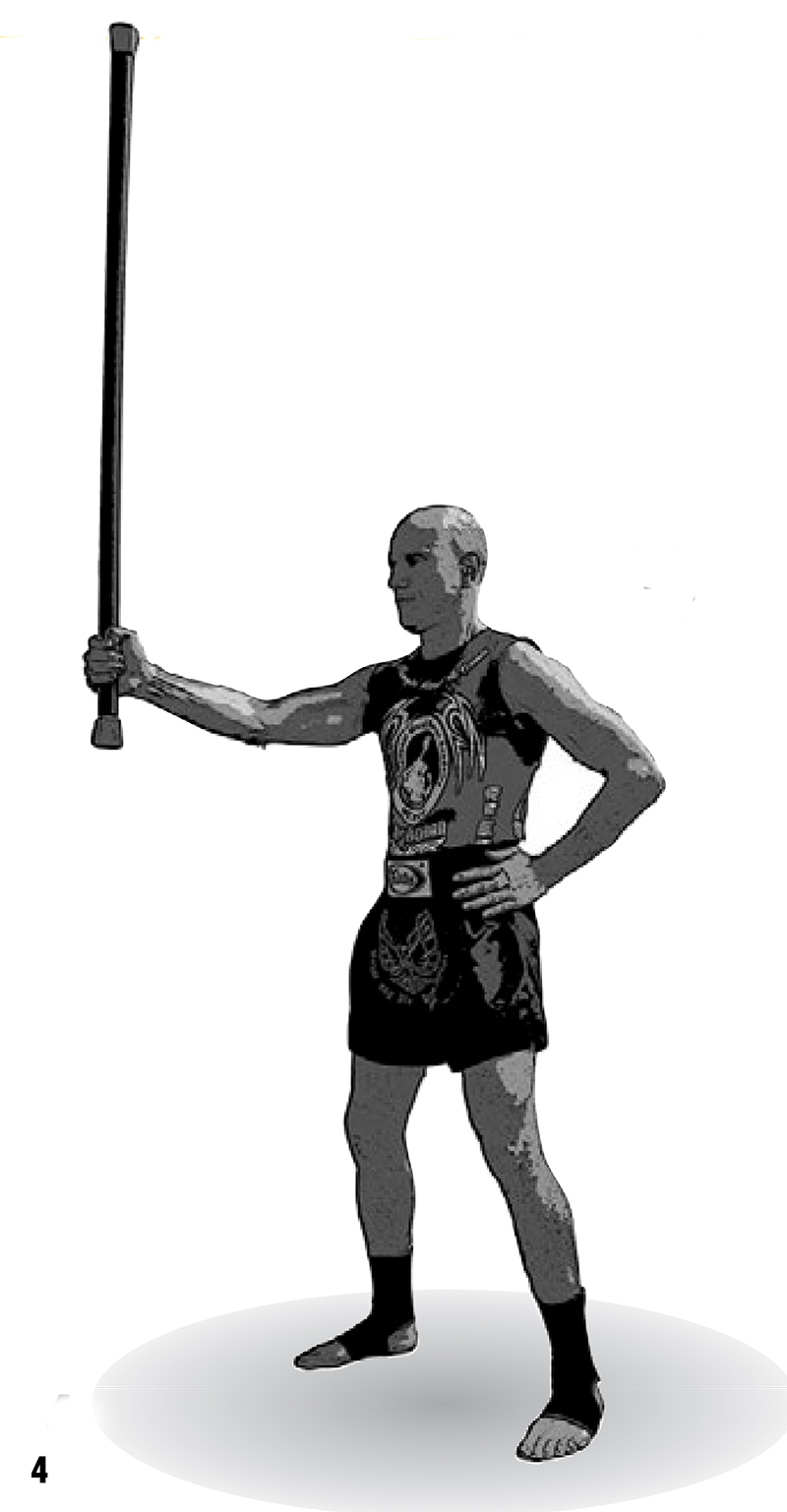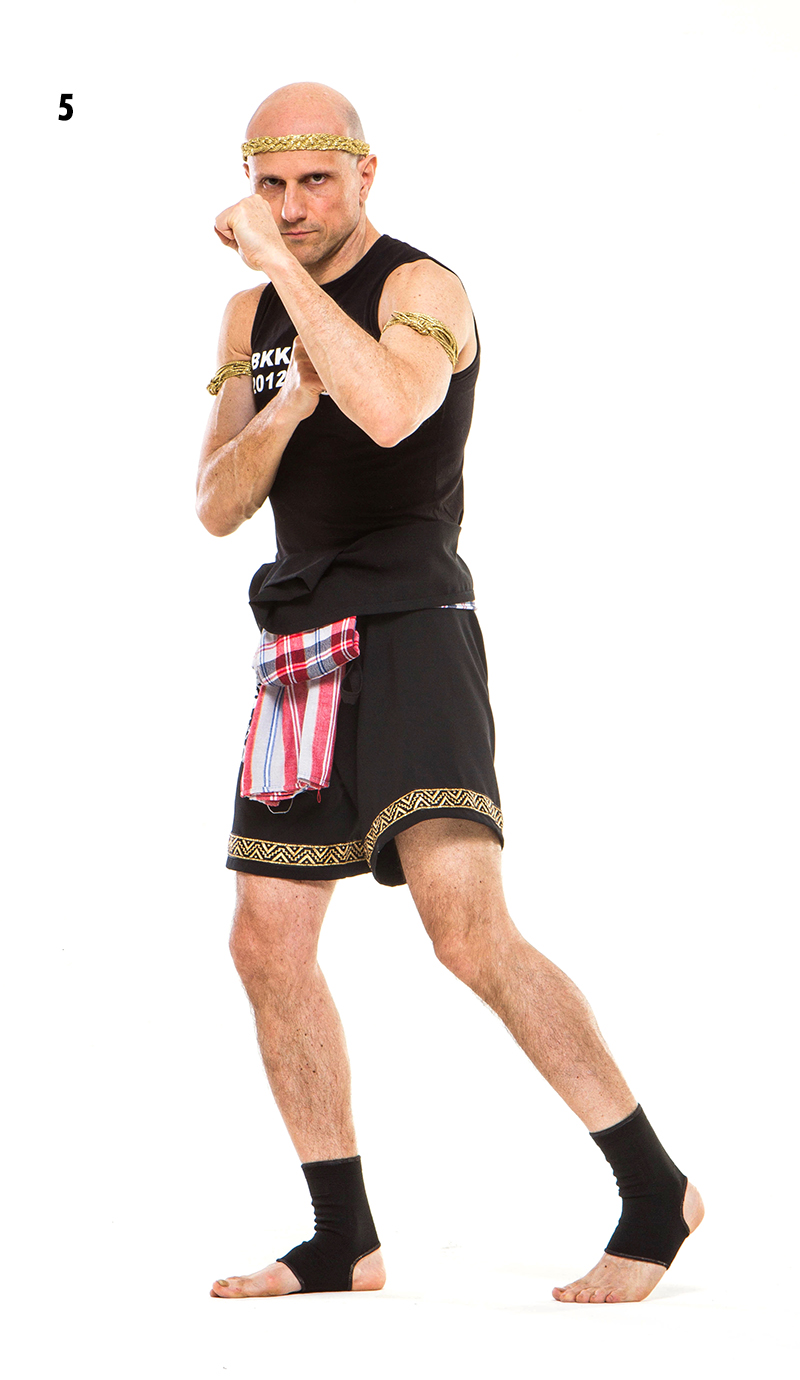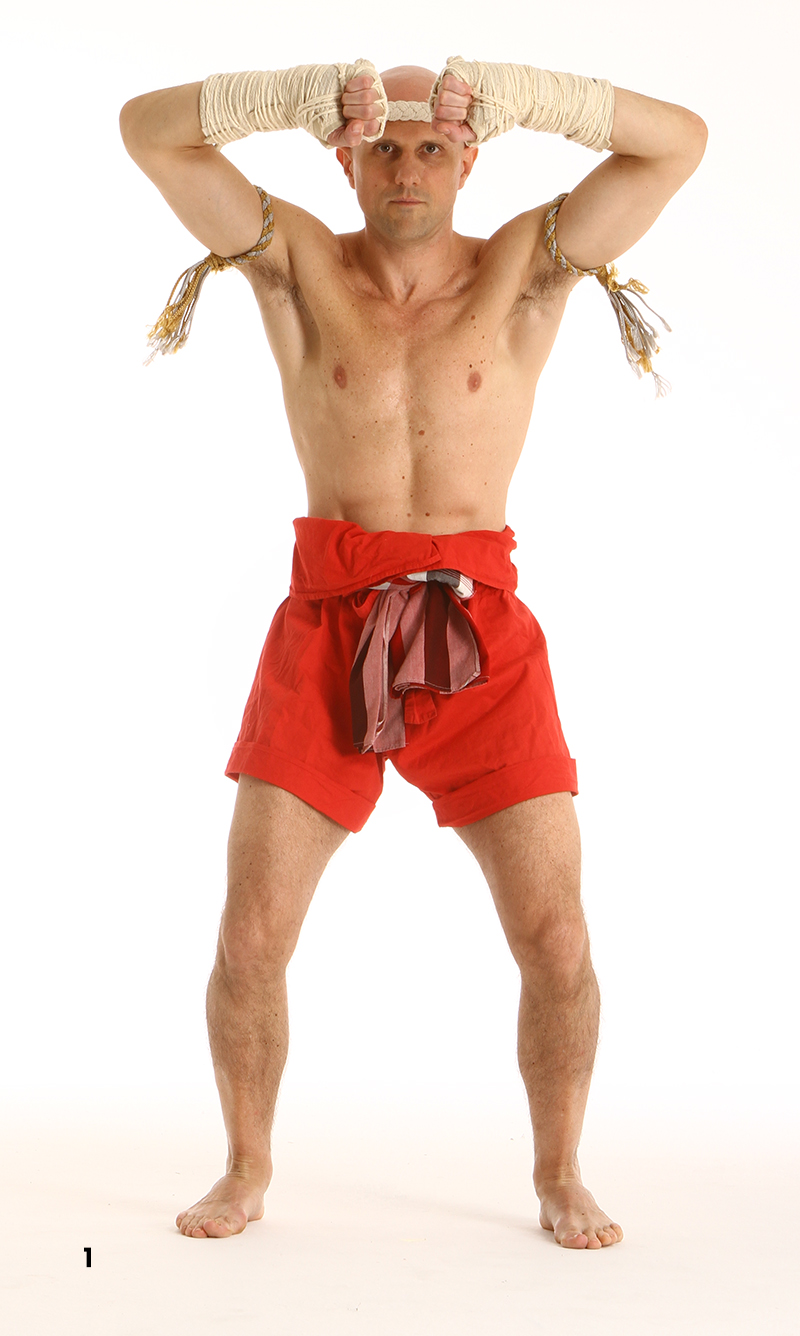
The ancient wisdom of Ta Yukapti
Muay, the ancestral Siamese martial art is based on the application of mathematical and geometrical principles to the art of combat. The main component of a good posture is the position of the fighter’s feet on the ground. This fundamental element represent an efficient application of mathematical and geometrical principles to the human body. The fighter’s feet position is the foundation on which the entire Siamese fighting system is built: according to an ancient tradition, it is generally considered that the fighter will stand in one of the following 3 ways in combat situations. In accordance with the feet position on the ground, you may stand in a 1-point support position (Yeun Neung Khum), a 2-point support position (Yeun Song Khum or square position) or a 3-point support position (Yeun Saam Khum). This latter is commonly called “the triangle stance”, since the feet are placed on the vertices of an imaginary triangle drawn on the ground. Going from the first to the third situation, the fighter’s stability and capacity to react to external stimuli, is gradually increased. The triangle position represents the pillar around which the entire “technical standard” of the Art is moulded; in fact, this is said to be the mother of all traditional techniques of Muay and its learning constitutes the true foundation of a real understanding of the Siamese original fighting system. However, an often misunderstood posture that hides a lot of crucial elements that, once unveiled, can provide a Nak Muay with a whole new perspective of training is the two-point position (image 1).
In fact, this posture is commonly labelled as useless in a fight and quickly discarded in favour of the more practical three-point position. This is a big mistake that may prevent a true understanding of the energy principles of Muay and, as a consequence, will hinder the development of a strong Battle Energy or Phalang Yuth.
Compared to Gam Lang or muscle energy, Phalang Yuth is much harder to define and very difficult to develop. A true Nak Suu (warrior) is considered “weapon-less” when he isn’t equipped with a high battle energy level. Training the muscles without caring for Phalang Yuth is a big mistake: all Muay Thai teachers should provide their students with a basic knowledge of battle energy drills.
Step one: understanding how to use the two-point position.
Not many students of Muay are accustomed to train in this posture: in fact, since lesson one, all thai boxers are taught to stand in one of the variations of the triangle position. This way they are directed towards various stepping patterns as soon as they begin to throw punches, kicks, knee and elbow strikes. However, the ancient training system that has been used for centuries by Thai teachers was based on the execution of many drills from the two-point position. This was done well before starting to practice steps and strikes in motion. Some modern-traditional styles of Muay still base their training on various applications of this often underestimated posture. In Muay Chaisawat all students are instructed to rehearse basic strikes from this position at the beginning of every class. Punches, kicks, knees and elbows are trained in Ta Song Khum with special emphasis on hip work. In fact, every strike should begin with a hip turn that generates the energy needed to execute the blow. In Muay Lert Rit, the most important element of attacking and defending is the proper application of 8 energy principles (paet lakkan phalang yuth): the best way to develop that kind of energy is through a series of drills executed in the two-point position (image 2).
In Combat Muay Boran, the basic strikes, combinations of strikes, defensive techniques, single and multiple counterattacks are also trained in the two-point position. All students are encouraged to use such drills as a specific warm up or as a mean to deepen the understanding of all dynamics involved in each movement (image 3).
Also in Muay Pram many fundamental drills are executed in Ta Song Khum, both with a training partner and solo (image 4).
Spending some time every day training in Ta Song Khum position will help Muay Thai stylists of all levels obtain several crucial benefits.
– Building up the strenght and endurance of the legs. With your feet at shoulder’s width start by bending your legs lining up your knees and your toes. Remember that squatting down too low may be detrimental to a proper body alinement and too stressful for your knee joints. Maintain this position for as long as you can, up to 30 minutes; abdominal breathing is required for a better development and circulation of life energy (Lom Pran). In phase two, start going up and down (stretch and flex your leg muscles) coordinating the leg work with deep abdominal breathing and eventually with specific arm movements. The muscles of the legs, buttocks, lower abdomen, lower back pelvic floor will benefit from regular Ta Song Khum training. Ankle, knee and hip joints’ endurance and strenght will also be greatly enhanced by this kind of static drills.
– Improving stability. Building a strong grounding is one of attributes that are traditionally considered crucial for a fighter. Without a strong root, power cannot be generated and expressed both defensively and offensively. Balance is a pre-requisite for the execution of all Muay Thai techniques: without a firm base there is no balance and without balance there is no force in defending and attacking. In Ta Song Khum training your body slowly acquires the ability to feel the ground and root itself: after training for some time in this posture, you will be able to progress to the more demanding Ta Neun Khum (one-point position). When only one foot is on the ground, your root must be very well developed to keep you in balance: working in this difficult stance represents the ultimate test of a fighter’s stability.
– Developing a better perception of your center. In Ta Song Khum a Nak Muay will learn to correctly line up his body: shoulders, hips, column and feet should be properly positioned at all times in order to enhance the generation and expression of power. This ability must be trained by constantly going through two-point position stability drills. When a fighter has developed a good balance he can be feel his center at all times: this means he has a perception of the body area where his energy is generated. He will become skilled in drawing force from the ground, leading it to his core (pelvic area) and from there, sending it to the arms and legs that will actually express it, offensively or defensively.
Many drills have been developed along the centuries that can be executed in Ta Song Khum: some of them are meant to develop fundamental physical attributes as we have seen. Others are intended to rehearse fighting techniques concentrating on proper body positioning and perfect execution. The main purpose of the latter kind of drills is to help the Nak Muay “feel” the flow of energy that goes from the ground up: when the energy reaches the hip area, a forceful twist must be employed to properly store and redirect that energy. This hip turn is often the missing link in the attacking and defending actions of many practitioners: on the contrary, proper turning of the hips is considered in Muay Thai as the most important factor in throwing powerful leg and arm strikes (image 5).
Countless repetitions of each punch, kick, knee and elbow technique executed while standing in two-point stance is required to develop real knock-out power. Also defensive moves will greatly benefit from a regular practice in Ta Song Khum. In fact, blocking, parrying, stopping, evading and sidestepping need perfect body alinement, balance, correct energy transmission from the core to be efficient. All these attributes are developed and enhanced by two-point stance training.
Last but not least, according to thai masters of old, a regular training in Ta Song Khum not only develops physical attributes but it can improve the mind power of a fighter, as well. In fact, working in that posture for long sessions builds up the character of a trainee, teaching him to tolerate fatigue and pain. When a trainee learns to keep his mental center even if he feels pain in most of his body (staying in a proper Song Khum posture for quite a long time is very demanding) his ability to stay centered in the heat of a battle (fight) will be greatly enhanced. This is obviously one of the mental skills that ancient masters always strived to develop in their students to prepare them for real battles.


